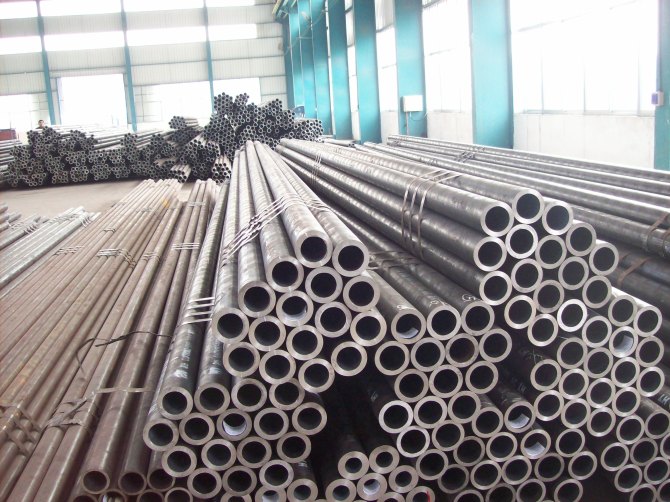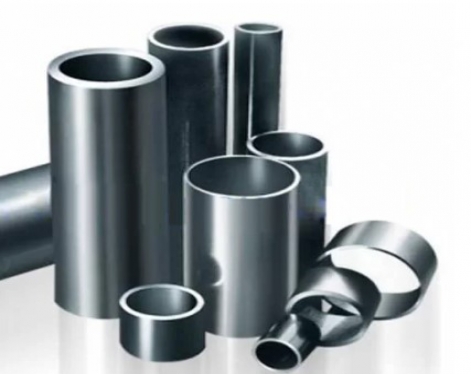1. Chemical composition analysis: chemical analysis method, instrumental analysis method
①Infrared C-S instrument: analyze ferroalloys, steelmaking raw materials, C and S elements in steel.
②Direct reading spectrometer: C, Si, Mn, P, S, Cr, Mo, Ni, Cn, W, V, Ti, B, Nb, As, Sn, Sb, Pb, Bi in bulk samples
③N-0 instrument: gas content analysis N, O
2. CS seamless pipe geometry and shape inspection:
① Steel pipe wall thickness inspection: micrometer, ultrasonic thickness gauge, no less than 8 points at both ends and record.
②Check the outer diameter of the steel pipe and the roundness of the bridge: caliper, vernier caliper, ring gauge, and measure the maximum and minimum points.
③ Steel pipe length inspection: steel tape measure, manual, automatic length measurement.
④Steel tube bending degree inspection: straightedge, level (1m), feeler gauge, thin wire to measure the bending degree of each meter and the bending degree of the whole length.
⑤ Inspection of the bevel angle and blunt edge of the end face of the steel pipe: square ruler, card board.
3. Steel pipe surface quality inspection:
① Manual visual inspection: lighting conditions, standards, experience, signs, steel pipe rotation.
②Non-destructive inspection:
a. Ultrasonic flaw detection UT:
It is more sensitive to the surface and internal crack defects of various materials with uniform materials.
b. Eddy current inspection (electromagnetic induction) is mainly sensitive to point-shaped (hole-shaped) defects.
c. Magnetic powder MT and magnetic flux leakage inspection: magnetic inspection, suitable for the detection of surface and near-surface defects of ferromagnetic materials.
d. Electromagnetic ultrasonic flaw detection: no coupling medium is required, and it can be applied to high temperature, high speed, and rough surface flaw detection of steel pipes.
e. Penetration inspection: fluorescence, coloring, detection of surface defects of steel pipes.

4. CS seamless pipe management performance inspection:
① Tensile test: measure stress and deformation, determine the strength (YS, TS) and plasticity index (A, Z) of the material, longitudinal, transverse sample pipe section, arc, circular sample (C10, (12.5) small diameter, Thin-walled large-diameter, thick-walled calibration distance.
②Impact test: CVN, notch C type, V type, work J value J/cm2 standard sample 10 × 10 × 55 (mm) non-standard sample 5 × 10 × 55 (mm)
③Hardness test: Brinell hardness HB, Rockwell hardness HRC, Vickers hardness HV, etc.
④Hydraulic test: test pressure, voltage stabilization time, p=2S8/D
5. Technical performance inspection of carbon steel pipe:
① Flattening test: round sample C-shaped sample (S/D>0.15)H=(1+2)S/(x+S/D)
L=40~100mm unit length deformation coefficient=0.07~0.08
②Ring pull test: L=15mm without crack is qualified
③Flaring and hemming test: the taper of the top center is 30°, 40°, 60°
④Bending test: can replace flattening test (for large diameter pipe)
6. Metallographic analysis of seamless steel pipe:
①High magnification inspection (microscopic analysis) non-metallic inclusions 100xGB/T10561 grain size: grade, grade difference
Organization: M, B, S, T, P, F, A-S
Decarburization layer: inner and outer
A method rating: Class A - Sulfide, Class B - Oxide, Class C - Silicate, D - Spherical Oxide DS Class
②Low magnification test (macro analysis): naked eye, magnifying glass below 10x
a. Acid etching inspection method, b. Sulfur seal inspection method (tube blank inspection, showing low cultured tissue and defects, such as looseness, segregation, subcutaneous air bubbles, turning skin, white spots, inclusions, etc.
c. Tower-shaped hairline inspection method: check the number, length and distribution of hairlines.
①Infrared C-S instrument: analyze ferroalloys, steelmaking raw materials, C and S elements in steel.
②Direct reading spectrometer: C, Si, Mn, P, S, Cr, Mo, Ni, Cn, W, V, Ti, B, Nb, As, Sn, Sb, Pb, Bi in bulk samples
③N-0 instrument: gas content analysis N, O
2. CS seamless pipe geometry and shape inspection:
① Steel pipe wall thickness inspection: micrometer, ultrasonic thickness gauge, no less than 8 points at both ends and record.
②Check the outer diameter of the steel pipe and the roundness of the bridge: caliper, vernier caliper, ring gauge, and measure the maximum and minimum points.
③ Steel pipe length inspection: steel tape measure, manual, automatic length measurement.
④Steel tube bending degree inspection: straightedge, level (1m), feeler gauge, thin wire to measure the bending degree of each meter and the bending degree of the whole length.
⑤ Inspection of the bevel angle and blunt edge of the end face of the steel pipe: square ruler, card board.
3. Steel pipe surface quality inspection:
① Manual visual inspection: lighting conditions, standards, experience, signs, steel pipe rotation.
②Non-destructive inspection:
a. Ultrasonic flaw detection UT:
It is more sensitive to the surface and internal crack defects of various materials with uniform materials.
b. Eddy current inspection (electromagnetic induction) is mainly sensitive to point-shaped (hole-shaped) defects.
c. Magnetic powder MT and magnetic flux leakage inspection: magnetic inspection, suitable for the detection of surface and near-surface defects of ferromagnetic materials.
d. Electromagnetic ultrasonic flaw detection: no coupling medium is required, and it can be applied to high temperature, high speed, and rough surface flaw detection of steel pipes.
e. Penetration inspection: fluorescence, coloring, detection of surface defects of steel pipes.

4. CS seamless pipe management performance inspection:
① Tensile test: measure stress and deformation, determine the strength (YS, TS) and plasticity index (A, Z) of the material, longitudinal, transverse sample pipe section, arc, circular sample (C10, (12.5) small diameter, Thin-walled large-diameter, thick-walled calibration distance.
②Impact test: CVN, notch C type, V type, work J value J/cm2 standard sample 10 × 10 × 55 (mm) non-standard sample 5 × 10 × 55 (mm)
③Hardness test: Brinell hardness HB, Rockwell hardness HRC, Vickers hardness HV, etc.
④Hydraulic test: test pressure, voltage stabilization time, p=2S8/D
5. Technical performance inspection of carbon steel pipe:
① Flattening test: round sample C-shaped sample (S/D>0.15)H=(1+2)S/(x+S/D)
L=40~100mm unit length deformation coefficient=0.07~0.08
②Ring pull test: L=15mm without crack is qualified
③Flaring and hemming test: the taper of the top center is 30°, 40°, 60°
④Bending test: can replace flattening test (for large diameter pipe)
6. Metallographic analysis of seamless steel pipe:
①High magnification inspection (microscopic analysis) non-metallic inclusions 100xGB/T10561 grain size: grade, grade difference
Organization: M, B, S, T, P, F, A-S
Decarburization layer: inner and outer
A method rating: Class A - Sulfide, Class B - Oxide, Class C - Silicate, D - Spherical Oxide DS Class
②Low magnification test (macro analysis): naked eye, magnifying glass below 10x
a. Acid etching inspection method, b. Sulfur seal inspection method (tube blank inspection, showing low cultured tissue and defects, such as looseness, segregation, subcutaneous air bubbles, turning skin, white spots, inclusions, etc.
c. Tower-shaped hairline inspection method: check the number, length and distribution of hairlines.
Previous:Seamless pipe for ships









